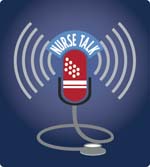The American Nurses Association (ANA) applauds the introduction of federal legislation to protect registered nurses (RNs) and other health care workers from costly, potentially career-ending injuries and musculoskeletal disorders (MSDs) caused by manual patient handling, such as lifting, transferring, and re-positioning.
The Nurse and Health Care Worker Protection Act of 2013 (H.R. 2480) would improve patient safety and quality of care. Crafted with input from ANA, the bill is sponsored by Congressman John Conyers (D-MI), a long-time champion of safe patient handling and mobility (SPHM) issues. The legislation, revamped from earlier bills, incorporates key content of the newly published Safe Patient Handling and Mobility: Interprofessional National Standards, a publication for creating, implementing, and managing a SPHM program developed by ANA and a multi-disciplinary team of national subject matter experts.
“Now, even though there have been great advances in safe patient handling and mobility technology, its use and availability continue to be spotty, and policies have been inconsistent, as well,” said ANA President Karen A. Daley, PhD, RN, FAAN. “Federal legislation will increase protections for patients and ensure safe working conditions and overall health and wellness for nurses. Health care worker and patient safety go hand-in-hand.”
Data from the Bureau of Labor Statistics in 2011 showed that registered nurses ranked fifth among all occupations for the number of MSD-related injuries and illnesses resulting in days away from work. Safe patient handling and mobility programs have been shown to benefit both health care workers and patients.
Research from the National Institute for Occupational Safety and Health (NIOSH) in 2006 reported that the implementation of a SPHMprogram is associated with improved quality of care, resident safety, comfort, and satisfaction. Regarding cost, a study by the Centers for Disease Control and Prevention (CDC) found that the investment in equipment and training was recouped in less than three years in lower worker compensation claims.
Among its provisions, the bill would require the Occupational Safety and Health Administration to develop and implement a safe patient handling and mobility standard that will eliminate manual lifting of patients by direct-care RNs and health care workers, and require health care employers to:
• Develop a safe patient handling and mobility plan, and to obtain input from direct-care RNs and health care workers during the process of developing and implementing such a plan;
• Purchase, use and maintain equipment and to train health care workers;
• Track and evaluate injuries related to the application of the safe patient handling and mobility standard; and
• Make information available to employees and their representatives.
For more information on ANA’s safe patient handling and mobility initiative, visit www.anasphm.org.
ANA is the only full-service professional organization representing the interests of the nation’s 3.1 million registered nurses through its constituent and state nurses associations and its organizational affiliates. ANA advances the nursing profession by fostering high standards of nursing practice, promoting the rights of nurses in the workplace, projecting a positive and realistic view of nursing, and by lobbying the Congress and regulatory agencies on health care issues affecting nurses and the public.

